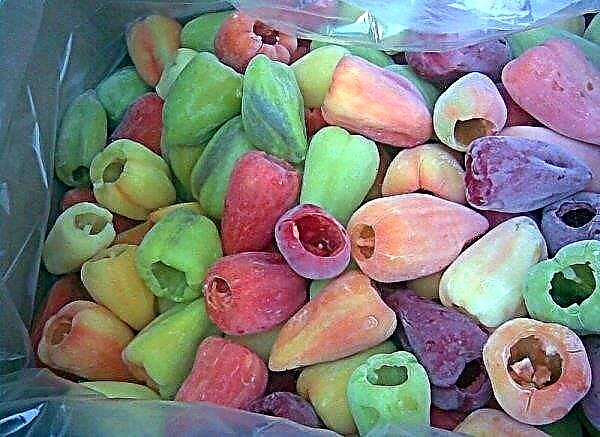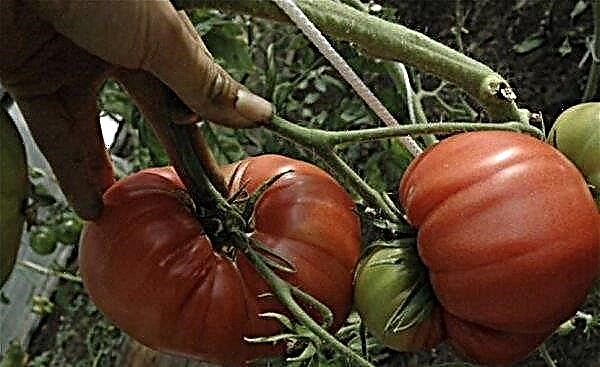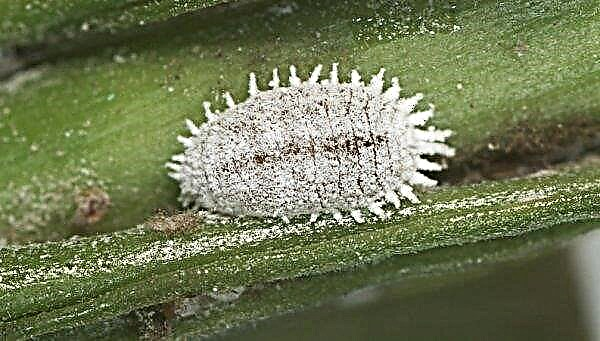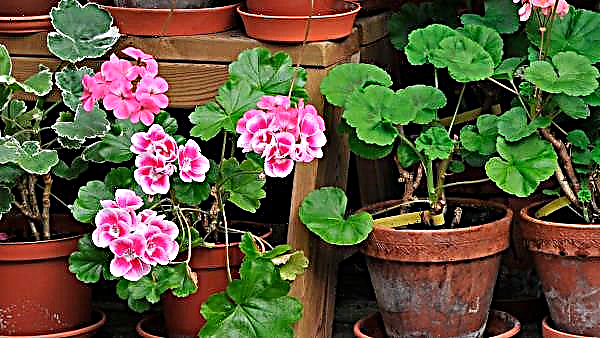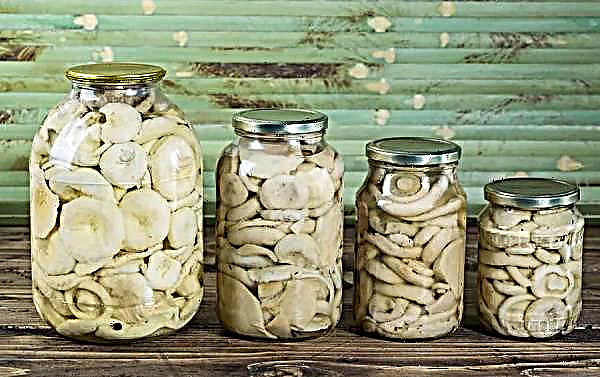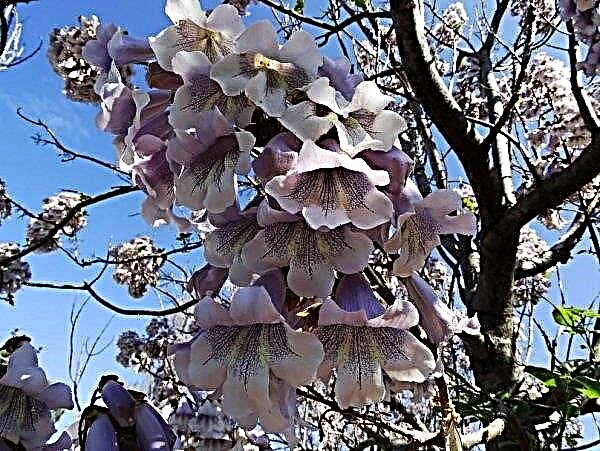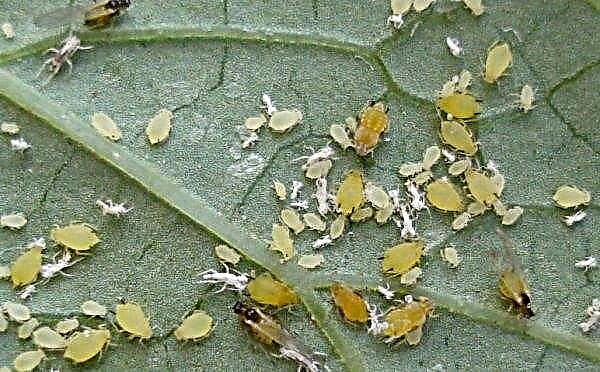Zamioculkas (Zamiocúlcas) is a frequent resident of window sills, because, despite its rather exotic appearance, it is extremely unpretentious. For this, lovers of indoor plants respect him and gladly keep them in their home “arboretums”.
Important! When cultivating this species, it must be remembered that all its parts are toxic, so the plant must be isolated from children and pets.
Botanical description of the plant
The birthplace of this bush, belonging to the Aroid family, is Madagascar and Kenya, where it is often found in the wild. In nature, the plant grows to a height of 1 m and lives 5-10 years. A tuber is formed in the soil that retains moisture and gives vitality in the driest periods. Zamioculcas blooms, which has another common name - the dollar tree, on the cob, typical of many members of its family. At home, it is almost impossible to achieve flowering.
Choosing a place for Zamioculcas
Given the African roots, the dollar tree is thermophilic and tolerates a dry period. Southeast and east window sills are well suited for him.
Temperature and humidity
Bushes adapted to living conditions tolerate not the hottest temperatures in different seasons. In summer, the optimum temperature is a fairly wide range - from +21 to + 29 ° C, and in winter the plant feels quite comfortable at +15 ... + 18 ° C.
Did you know? The popular sign says: if Zamioculcas bloomed in the house of an unmarried woman, then she will soon get married.
Humidity is not the most important factor for zamioculcas, in the summer heat you can do without spraying the leaves, only once a month washing off the dust with warm water. Not bad bush takes air baths on the street. In winter, you can do without watering for a long time, only by checking that the soil under the top layer does not dry out.
Lighting
Bright sun rays should be avoided - they can damage the leaves. The light should be subdued and diffused, which will create maximum comfort for the plant. A deep shadow is also contraindicated and will slow down the development of shoots. For uniform illumination and development of all parts of the bush, it is necessary to turn the pot on the windowsill - this can even be called a passive type of crown formation.
The choice of dishes or container for planting
Planting is done in a small container where the seedling will be comfortable. He has no special requirements, but for the first "house" a small pot or plastic container is suitable.
Soil for Zamioculcas
Oddly enough, depleted soils that pass water through themselves well are suitable for this species. You can apply the soil for cacti, but it is still better to pamper the plant with soil of the following composition in equal shares:
- turf land;
- peat land;
- sheet earth;
- sand.
Landing
Reproduction of zamioculcas is possible in various ways:
- cuttings;
- leaf with roots;
- leaf without roots;
- young leaves.
Process (cuttings)
Cutting of the stem is carried out in the following sequence:
- the shoot is cut 1 cm above the soil level in the pot;
- in the middle of the spaces between the leaves, the stem is cut into pieces;
- the resulting cuttings are dried for about 1 hour;
- the stalk is planted in vermiculite and well watered;
- within a month, there is a saturation with nutrients and rooting.
Video: propagation of Zamioculcus by cuttings
Adult leaf
A leaf taken from an adult culture can be rooted and planted to produce a new bush:
- pinch off or cut off a strong healthy leaf;
- plant it in perlite, wet sand, or a mixture of these components with peat;
- apply growth and rooting stimulants - Zircon, Kornevin, etc.
- cover the container with film or glass and place in a warm place with light lighting;
- rooting and tuber formation lasts from 1 to 2-3 months.
Video: reproduction of zamioculcas by an adult leaf
Adult leaf without roots
You can try to propagate zamioculcas by placing an adult leaf in a container of water (a glass, a small glass). This method requires patience, because more than one month can pass before the possible appearance of the roots. However, the roots may not appear, which many growers complain.
Leaflets
It is promising to grow young leaves or even a small twig - young shoots tend to take root and form a tuber. True, this happens extremely slowly - for a year of growth, the tuber will have a diameter of about 2 cm.
Plant care
This indoor succulent does not require any careful supervision. It is enough to learn only the basic duties of caring for him.
Important! Once in 1–1.5 months you need to spray the foliage with a urea solution or complex additives in a small concentration.
Watering Zamioculcas
Since the plant is able to accumulate moisture in the underground part, it should be watered moderately. The earthen lump is constantly checked for the depth of the wet layer. In this case, there is an unwritten rule: if you have any doubts about the need for watering, then postpone it the next day. It is especially worthwhile to carefully observe the bush in the winter, when it is better not to water than to overfill. In case of excessive watering, the foliage may turn yellow, and the roots rot. Watering is carried out with settled water at room temperature (or slightly warmer).
It is especially worthwhile to carefully observe the bush in the winter, when it is better not to water than to overfill. In case of excessive watering, the foliage may turn yellow, and the roots rot. Watering is carried out with settled water at room temperature (or slightly warmer).
Fertilizer and fertilizing
Fertilizing is usually carried out during leaf formation, at which time the bush responds particularly well to top dressing. Nutrient mixtures should be applied once every two weeks. At the same time, organic and mineral fertilizers alternate. Both indoor plants and specialized fertilizers for cacti and succulents are used. When using top dressing for indoor crops, they are diluted to a concentration of 50%.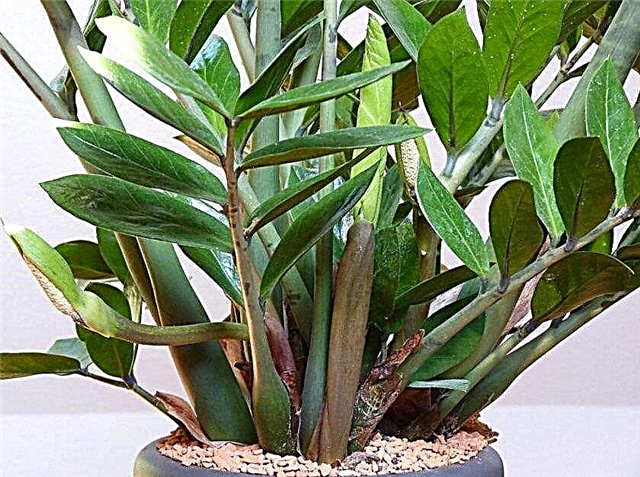
Reproduction and transplantation
How to grow a new bush, was discussed above. But there is a way by which you can immediately get an adult culture. It's about dividing the tuber.
The breeding technology is as follows:
- during the transplant, the tuber is neatly divided into several parts, on each of which shoots should be;
- parts need to be planted in prepared pots in the soil, as for an adult bush;
- the first week the so-called "dividers" are not watered;
- further resume full-fledged care for adult Zamioculcus.
The division is perceived by the plant painfully, so it stops in growth. Sometimes the appearance of new leaves is recorded only six months after division. An adult plant is transplanted in the spring every 3-4 years. The process is carried out more to update living conditions than to expand the "living space". Since zamioculcas is rather slowly growing, during container change it must be planted in a new container, the volume of which should be 10-15% more than the previous one.
The adult bush is carefully transferred to a new container so as not to damage the tuber and not break the established earthen lump. Complete soil replacement is carried out only during treatment for diseases or in the division of the tuber. To plant the bush deeply or not in a new container, they determine this: after sprinkling and light compaction, the soil should cover the rhizome 1-2 cm.
Video: Zamioculcas transplant
Pests and diseases of zamioculcas
The plant is not susceptible to diseases and pests that affect indoor plantings. But in some cases, it may be necessary to help the bush in the fight against ailment or insects. From diseases, culture can be damaged gray rot which is manifested by spots on the leaves. In this case, it is necessary to stop watering for 1-2 weeks. Symptoms may also appear on the bushes. late blight - putrefactive stains that are treated with fungicides (Phytocide, Topsin-M). Occasionally, a spider mite can parasitize a plant, which weaves the lower part of the leaves with a fine mesh. With mild to moderate damage, washing the foliage with soap and water helps well. If the development of the pest on the bush has become total, it is necessary to use insecticides for indoor plants ("Aktellik", "Aktofit").
Occasionally, a spider mite can parasitize a plant, which weaves the lower part of the leaves with a fine mesh. With mild to moderate damage, washing the foliage with soap and water helps well. If the development of the pest on the bush has become total, it is necessary to use insecticides for indoor plants ("Aktellik", "Aktofit").
Did you know? According to the teachings of Feng Shui, the "dollar tree" attracts finance. To do this, they put it on the southeastern or eastern windowsill and dig a few coins near the tuber.
Zamiokulkas, with all its strict beauty, is gaining more and more popularity among home growers, especially unpretentiousness. An interesting, different from the other plant will decorate the windowsill and bring aesthetic pleasure.


